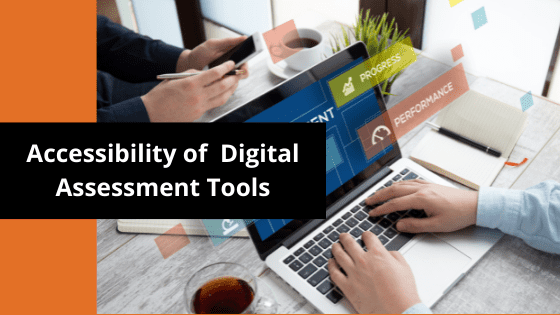The answer is YES!
Assessments are used to evaluate the knowledge of the learner and therefore if the learner has a disability, then even they should be able to use the digital assessment tools seamlessly.
But can they?
People with disabilities may need some accommodation and often due to this accommodation they were often told to use an alternate method of test taking.
With digital assessment, we have the opportunity to make this is level playing field for people with disabilities. With a Billion+ people with disabilities globally, we need to make these tools accessible today.
Needs of Learners with a Disability
As an organization focusing on Digital Assessment Tools, we need to consider the needs of diverse group of learners.
- Allow use of assistive technologies
The most important thing here is to allow learners to use the assistive technology of their choice. This can range from screen readers, screen magnifiers, braille displayers, switches, adaptive keyboards, speech recognition, reading & writing tools, etc.
- Ensure the tool meet the Web Content Accessibility Guideline 2.1
Build for inclusion. Ensure that your product team is keeping in mind accessibility right from the design stage. Put in processes to ensure that developers implement accessibility requirements and provide a seamless user experience for all.
- Content is critical and ensuring that is equitable
Ensure that the language of the questions and the options are equitable. For example, if you have a question that a user must answer by looking at an image, then how do you ensure that people with visual impairment can get the information.
- Provide Accommodations
If a learner needs accommodations like sign language interpreter, or instructions in braille, or even an advocate in the room, having a process in place to allow for the same seamlessly.
Building Blocks for Accessibility
At BarrierBreak, we tell our customers to think about the building blocks to implement accessibility.
- Accessibility Statement
Commit to Accessibility and make your stand known by having an accessibility statement.
- Voluntary Product Accessibility Template (VPAT)
Create a VPAT for your product. This will enable customers to know how your product fairs on Accessibility.
- Accessibility Support in your Communication
Talk about Accessibility in your product guides, user manuals, FAQs and knowledgebase. Let people easily access the amazing work you are doing to promote accessibility
Reach out to us to know more about how we can support you in your accessibility initiatives. Remember Accessibility is a journey and it’s time to ensure your product has an accessibility roadmap towards inclusion!
